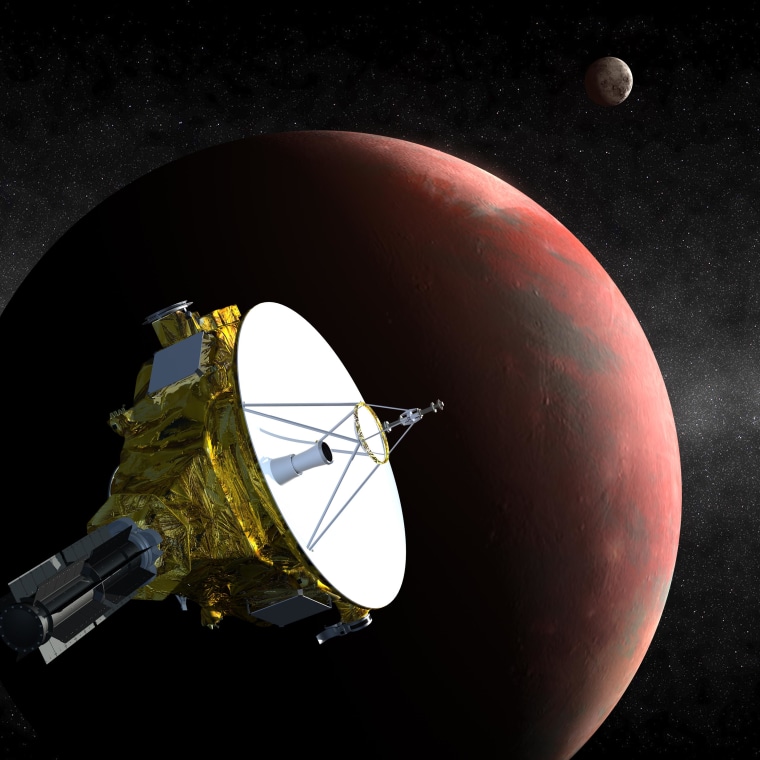From 2.9 billion miles away, NASA's New Horizons spacecraft let its handlers know on Saturday that it has awakened from hibernation and is ready for the climax of its nine-year trip to Pluto.
The first signals were received at the mission's control center at Johns Hopkins University's Applied Physics Laboratory in Maryland via a giant radio antenna in Australia just before 9:30 p.m. ET, nearly four and a half hours after it was sent by the piano-sized probe. It takes that long for signals to travel between there and here at the speed of light.
Later readings confirmed that New Horizons was fully awake.
“This is a watershed event that signals the end of New Horizons crossing of a vast ocean of space to the very frontier of our solar system, and the beginning of the mission’s primary objective: the exploration of Pluto and its many moons in 2015,” Southwest Research Institute planetary scientist Alan Stern, the principal investigator for the $728 million New Horizons mission, said in a NASA statement.
New Horizons has been spending about two-thirds of the time since its launch in 2006 in hibernation, to save on electronic wear and tear as well as operational costs. Every few months, the spacecraft's systems have been roused to wakefulness for a checkup, or for photo ops such as its Jupiter flyby in 2007.
The probe also has been sending weekly blips known as "green beacons" — to let the mission team know it's not dead, but only sleeping.
The instructions for the wakeup call were transmitted to the spacecraft during a checkup in August, and the signal sent on Saturday confirmed that the instructions were executed earlier in the day. To celebrate the occasion, the New Horizons team arranged for English tenor Russell Watson to record a special rendition of the Star Trek anthem "Where My Heart Will Take Me" as a wakeup song.
From now on, New Horizons will remain awake continuously through its Bastille Day flyby of Pluto and its moons next July 14. After a few weeks of preparation, the probe's instruments will start making long-range observations on Jan. 15.
The spacecraft is currently about 162 million miles away from Pluto, but as that distance shrinks, the observations will get better and better. By next May, New Horizons' images of Pluto should be sharper than the best pictures taken by the Hubble Space Telescope. And in July, the probe may catch sight of the clouds and ice volcanoes that scientists suspect may exist on the dwarf planet.
New Horizons will capture pictures of Pluto and its five known moons, but there may be surprises as well — still more moons, perhaps, or icy rings around Pluto. So many readings are expected to pile up that New Horizons will have to store the data in its memory and transmit it for more than a year after the encounter.
After Pluto, New Horizons' team is planning to send the probe past another icy object in the Kuiper Belt, the ring of cosmic material that lies beyond Neptune's orbit, in late 2018 or 2019.
“New Horizons is on a journey to a new class of planets we've never seen, in a place we've never been before," NASA quoted New Horizons' project scientist, Hal Weaver of the Applied Physics Laboratory, as saying. "For decades we thought Pluto was this odd little body on the planetary outskirts; now we know it's really a gateway to an entire region of new worlds in the Kuiper Belt, and New Horizons is going to provide the first close-up look at them."
The probe's computer eventually will be reprogrammed to carry digital "selfies to the stars," courtesy of the One Earth New Horizons Message project.
